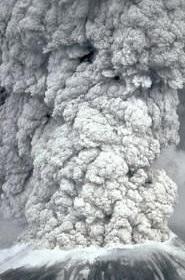 |
|
|
|
|
|
|||
|
By Bill Goldston |
||||
 |
May 19, 2010 - The
International Air Transport Association (IATA) which represents some 230
airlines comprising 93% of scheduled international air traffic called on
European governments and air navigation service providers to urgently
develop more precise procedures to identify ash contaminated air space
and allow more flights. The call came in the wake of 1,000 flight
cancellations on Monday (17 May) as a result of the continued volcanic
eruptions in “This problem is not going away any time soon. The current European-wide system to decide on airspace closures is not working. We welcome the operational refinements made by the Volcanic Ash Advisory Centre (VAAC) in their theoretical model but we are still basically relying on one-dimensional information to make decisions on a four-dimensional problem. The result is the unnecessary closure of airspace. Safety is always our number one priority. But we must make decisions based on facts, not on uncorroborated theoretical models,” said Giovanni Bisignani, IATA’s Director General and CEO. |
|||
|
|
||||
|
Bisignani noted
some successful exceptions which provide examples to follow. “ Bisignani called for (1) more robust data collection and analysis (2) a change in the decision making process and (3) urgency in addressing the issues.
Data Collection
and Analysis: “Numbers show that the current system is flawed. Over
200,000 flights have operated in European airspace identified by the
VAAC as having the potential presence of ash. Not one aircraft has
reported significant ash presence and this is verified by post-flight
aircraft and engine inspections. We must back the theory with facts
gathered by aircraft to test ash concentration.
Changing the
Decision-making Process: “We have lost confidence in the ability of |
||||
|
“Ultimately the industry needs a decision-making process for ash clouds similar to the one used for all other operational disruptions. Every day airlines make decisions whether to fly or not to fly in various weather conditions. Airlines collate the information available and make informed decisions placing safety first and with full access to all the latest weather reporting. Why should volcanic ash be any different?” said Bisignani.
In the
Urgency: “Volcanic
ash is a new challenge for European aviation. We can understand that
systems need to be developed to cope. But what is absolutely inexcusable
is the failure of
To enhance the
industry’s long-term ability to address volcanic ash issues, Bisignani
is traveling to |
| Other News Stories |
|
|
| ©AvStop
Online Magazine
Contact
Us
Return To News
|
|

